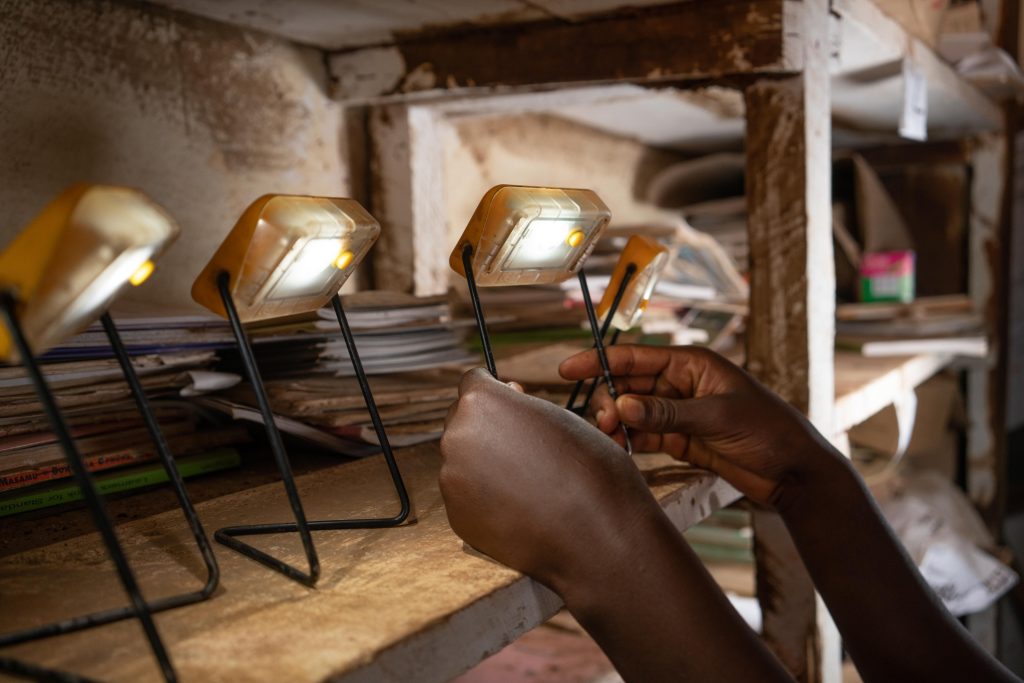Globally, 230 million children attend schools without access to electricity, impeding their ability to access quality education. For many, the challenges don’t stop there. At home, children also lack access to light leaving them unable to study and imagine a brighter future as the sun sets.
As part of SolarAid’s mission, we are committed to lighting up every school in Africa with safe, clean, solar power. But, we can’t do it alone. We are calling on the wider international community to recognise the opportunity of solar energy to give millions of children a brighter future.
Without access to safe, affordable light, children risk their lives to study by open flames or hazardous kerosene. These alternatives cause countless tragic accidents and contribute to deadly indoor air pollution, of which an estimated 500,000 children under 5 die every year.
With a simple, safe, affordable option readily available – it is unacceptable that children are still risking their lives to do their homework.

This is why, in 2019, SolarAid launched its programme ‘Light Libraries’. The idea was simple, but the ambition was big.
Light Libraries work as regular libraries for books – but for solar lights. For less than 1p/day, a child can borrow a light and bring it home with them in the evening. The flick of a switch extends the day allowing more time for homework, reading and imagining a future. When homework is done, parents are able to use the light to cook or get ready for bed. It also allows families to familiarise themselves with the power of solar, and understand how this could be a safer and cheaper alternative to candles and kerosene.

Dalitso Halario lending a solar light at the school Light Library from Head Teacher Beatrice at Kalira School, Malawi. Photo: SolarAid/Chris Gagnon.
From the beginning of the programme, its impact was undeniable. The anecdotes of students passing their exams, going off to higher education fuelled the Light Libraries programme’s expansion. As big believers in the power of collaboration, we teamed up with Book Aid International and launched 17 more Light Libraries in Malawi. What better way to power a child’s dream than the combination of books and lights? Now, 62 new Light Libraries are in the plans for the coming year. The early signs of impact from our M&E are showing that 95% of children at the schools with Light Libraries say they read at night and make full use of the light. 70% of the parents have already bought a solar light to keep in their home.
We recently met with some of the children and teachers in Malawi who now have access to a Light Library at their school. Like Fabriola. Fabriola dreams of becoming a nurse, just like her mum, Elizabeth, did when she was a child. Elizabeth’s family wasn’t able to pay her school fees which made her dream of becoming a nurse slip away. Now, Elizabeth’s dream lives on through her daughter Fabriola. Previously, the family used a battery powered torch for light in the evening, but often, there was not enough money to buy batteries. “In the end I was not performing well in class because sometimes, I just read a little bit and the torch light went off. So I failed because I was not able to study enough,” Fabriola told us.

Fabiola reading outside her house in Tembetembe village, Malawi. Photo: SolarAid/Chris Gagnon
Since the Light Library was introduced at her school, Fabriola rents a solar light on a monthly basis and has already seen a change. “I was happy because I knew that I would improve my performance in the classroom (…) When I borrow a book and a torch, I go home and I study in a quiet place so that nobody disturbs me.”
Speaking to children like Fabriola and her classmate, Dalitso, makes it clear- we must step up our efforts and collaborate to solve one of the greatest challenges of our time. With a smart invention such as the solar light, we can achieve SDG7 and SDG4 by 2030.
Together, we can brighten the way for the next generation of dreamers.
